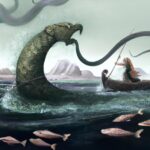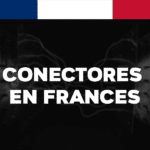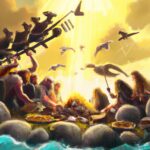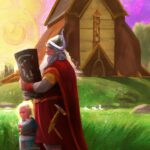
Twilight of the Gods is a 1950 German film directed by German director, FW Murnau. It is based on the homonymous novel written by Thomas Mann and it is a psychological drama that explores the internal conflicts between human desire and socially accepted morality. The film follows Hans (Mathias Wieman), a young aristocrat who falls in love with Lola (Lilian Harvey), a cabaret dancer, and fights against her family in order to marry her. As the story progresses, we see how the main characters battle their own inner demons as they try to find their way in the modern world. Twilight of the Gods is considered a classic of German cinema and was nominated for an Oscar for Best Adapted Screenplay in 1951. The film is full of profound symbolism and beautiful cinematographic images that reflect the complexity of the central theme: the conflict between human and the divine.
Summary
The Twilight of the Gods is one of the most famous stories in Norse mythology. This story tells of the end of the world as the gods and heroes know it, and how they all prepare for the inevitable fate that awaits them.
The story begins with the prophecy of a seer named Völuspá, who predicts that Ragnarok, or the End of the World, is near. This prophecy is fulfilled when the gods receive the news that their most feared enemy, the giant Loki, has escaped from his prison. Loki brings with him his monstrous sons: Fenrir the giant wolf and Jörmungandr the sea dragon. These creatures threaten to destroy the entire world if they are not stopped in time.
The gods then decide to meet in Asgard to discuss how to stop Loki and his monstrous children before it is too late. As they discuss strategies to defeat their enemies, Thor sets out in search of the hammer Mjolnir to aid them in their fight against the evil forces. Unfortunately, Thor can't find him in time and the gods are forced to face the evil army without him. Finally after a long epic battle between the gods and the evil forces; Odin (the father of all gods) sacrifices his life to save the world from Ragnarok and thus preserve the very existence of the Nordic cosmos.
Although this story is about an apocalyptic event that ends the world as the Norse gods know it; there are many positive lessons we can draw from it: Courage in the face of danger; The sacrifice for those loved; The importance of standing firm in the face of adversity; And the imperative need to embrace our destiny no matter how difficult it is to face it.
Main characters
The Twilight of the Gods is one of the main legends of Norse mythology. This story tells of the fall of the kingdom of the gods and the end of the known world. The plot unfolds in three parts: the beginning, the middle, and the end.
In the first part, it is narrated how the gods decide to create a world to live in. The gods choose Ymir as their first inhabitant, who is a giant created by themselves from ice and snow. The world they create is made up of Niflheim, the realm of shadows; Muspelheim, the kingdom of fire; Midgard, the human kingdom; Asgard, the home of the gods; and Jotunheim, the home of the giants.
In the second part it is described how Odin leads his brothers Vili and Ve to defeat the giant Ymir and thus obtain enough raw material to create Midgard. Once they have completed their task, Odin builds a great hall called Valhalla where they receive those warriors who die in battle with honor. He also builds Asgard as a residence for himself and his siblings as well as for other important gods such as Thor or Freya among others.
In the third part, it is related how Loki conspires against the other gods, thus causing his gradual fall until he reaches Ragnarök (the Twilight of the Gods). During this event all the kingdoms are destroyed by fire while many important figures die in battle including Odin himself who is devoured by Fenrir (the giant wolf). In the end, only two survivors remain: Baldur (Odin's favorite son) and Hoenir (an old companion). These two embark on a journey to rebuild everything destroyed during Ragnarök, thus starting a new world.
intervening gods
The Twilight of the Gods is one of the most important and significant themes in Norse mythology. This narrative describes the end of the world as known to gods and humans, as well as the destruction of the cosmic order.
The story begins with the god Odin, the father of all the Norse gods, who decides to sacrifice his eye to gain wisdom. After this, he and his brothers Vili and Ve create the world from the dead body of Ymir, a primordial giant. This creation includes Midgard (the human world), Asgard (the home of the gods), and Jotunheim (the home of the giants).
The gods live in peace for many generations until Ragnarok arrives, a prophecy that predicts the destruction of the world. It begins with Fimbulwinter, an extremely cold and intense winter that lasts for three years without stopping. During this time wars break out between the various human tribes and among themselves; there are also battles between the gods and their enemies: The Jotunheim giants. Finally the fateful moment comes when everyone gathers on the battlefield called Vigrid to fight one last time.
During this final battle many important characters die: Odin is devoured by Fenrir; Thor is killed by being struck by Jormungand; Freyr falls to Surt; Heimdall is killed by Loki; Hel dies at the hands of Odin; Surt burns Asgard to ashes; And Fenrir swallows the sun along with the moon causing a total eclipse over Midgard.
After the fight only two survivors remain: Baldr (Odin's favorite son) and Höðr (stepbrother). They rebuild Asgard along with other survivors thus starting a new cosmic order called "Alfheim". The Twilight of the Gods symbolizes not only the end of the ancient world but also the constant renewal necessary to stay alive in this mighty river called life.
Main topics covered
The Twilight of the Gods is one of the most important and significant themes in Norse mythology. It is a profound tragedy that describes the end of the world and the final destiny of the gods, as well as the creation of a new world. This story is found in the Poetic Edda, an ancient manuscript written by Snorri Sturluson, which contains many accounts of Norse mythology.
In this story, the gods prepare for their last battle against the giants of chaos. This battle is known as Ragnarök or "the end of destiny". During this battle, all the gods will die and the world will be destroyed by fire and water. After this catastrophe, the world will be rebuilt from the ashes and a new order will emerge in which two surviving people will live: Lif (life) and Lifthrasir (love).
This story is very significant for the Nordic culture as it symbolizes the idea of eternal cycles: both good and bad things have their own natural cycles within the divine order. The Twilight of the Gods represents not only the end of the ancient world but also the beginning of something better; somewhat improved by all the experiences lived during this turbulent period. This idea has inspired many artists throughout history with their literary, artistic, and even musical works.



